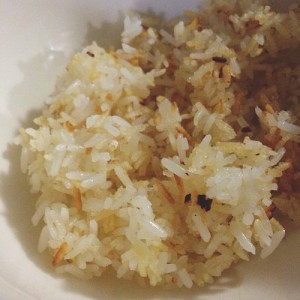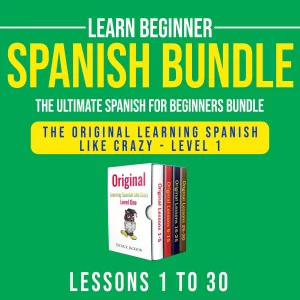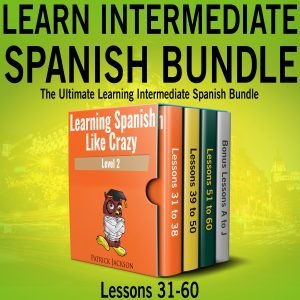
I am going to cover several Spanish words that you will not find in your typical learning-Spanish vocabulary book. But I assure you that they are words that native Spanish speakers use.
The first one I want to share with you because I heard a Gringo (American) here in Medellín make a mistake with this vocabulary word this morning when I was in the “gimnasio” (gym). The “error” (mistake) was actually “muy chistoso” (very funny) or as they say here in Medellín “muy charro” (very funny).
After working-out in the “gimnasio” today, I heard the American say to his friend “Voy a bañarme. Estoy sudado. Estoy muy pegado!”
How To Say I Am Going To Take a Bath In Spanish
The first sentence “voy a bañarme” literally means, “I am going to bathe myself”– it is still correct. In Colombia, it is common for people to use the verb “bañarse” instead of “ducharse” (to shower yourself) — although one is actually going to shower instead of taking a bath.
How To Say I Am Sweaty In Spanish
His second sentence was also fine:
Estoy sudado.
I am sweaty.
Note that you may also hear native Spanish speakers use the phrase “estoy sudoroso” to say “I am sweaty.” If you want to sound a bit more formal then say “estoy traspirado” or “estoy transpirando.” It is the equivalent of saying “I am perspiring.”
But his third sentence – “estoy muy pegado!” – literally means “I am stuck!” And I am sure that what he really meant to say is “Estoy muy pegajoso!” Which means “I am very sticky!”
So that´s the correct way to say, “I am sticky.”
Estoy pegajoso.
Unless, of course, you really want to say, I am stuck: estoy pegado.
Which reminds there are Spanish words related to “pegado” and “pegajoso” which you may want to know.
One word is “pegamento” (glue).
Another is “pegar” (to glue).
Los niños utilizaron pegamento para pegar sus dibujos.
The children used glue in order to glue their drawings.
Another word is “pegao.” Pegao is actually a Puerto Rican slang word which means “close” as in to dance close. After being popularized by Puerto Rican reggaetón duo Wisel & Yandel’s hit recording called “Pegao” young people all over Latin America are now familiar with the word pegao and its meaning “to dance close” or “to dance glued.”
Puerto Ricans also have a second meaning for the word pegao:
Crust of the rice found at the bottom of the pot.
This reminds me of how it is so common to find that in different Spanish speaking countries they have different words which mean the same things.
When I still lived in New York City, I noticed that although my Puerto Rican friends used the word “pegao” for cruncy rice, I noticed that all my Dominican friends used the word “concón” for crunchy rice that sticks to the bottom of the pot.
And when I used to live in Barranquilla, Colombia, I would hear the word “cucayo” used for the crispy layer of rice that is scraped from the bottom of the pot. But here in the Medellin, they call it “pegao” – just like Puerto Ricans call it.
And Cubans use the word “raspa” to refer to the rice crust stuck to the bottom of the pot. “Raspa” apparently comes from the Spanish verb “raspar” which means to scrape.
Here’a pic of pegao, concón, cucayo or raspa.
As a fellow American, I know just what you are thinking after looking at the above picture . . .
From the viewpoint of an American, I know that pegao, concón, cucayo or raspa looks more like food that you´d throw away in the “basura” (garbage) and less like something you’d actually want to eat.
But trust me, pegao, concón, cucayo or raspa is a “plato” (culinary dish) that’s very “delicioso” (delicious) and it also happens to be one of my favorite dishes.
I eat it with “frijoles” (beans) – or as they say in D.R. (República Dominicana) and Puerto Rico “habichuelas” (beans). I eat the beans “encima de” (on top of) my pegao.
I even eat it as a “plato fuerte” (main dish) with “carne” (meat), “pollo” (chicken) or “pescado” (fish) and a portion of “aguacate” (avocado).
And by the way, it may look like burnt rice, but properly cooked pegao is not burnt. OK, I admit, maybe it is a little scorched.
Before you embarrass yourself by asking for pegao, concón, cucayo or raspa in a Latino restaraunt, I should warn you that this is not a dish served in restaurants. PLEASE DO NOT QUOTE ME ON THIS but my guess is that it is a dish more commonly served in the homes of the “humilde.” “Humilde” is the politically correct way or non-offensive way to call someone poor in Colombia and other parts of Latin America.
If you are interested in learning how to cook pegao, concón cucayo or raspa, I have found a “receta” (recipe). Here´s how to cook it “estilo dominicano” (Dominican style):
http://www.cocinadominicana.com/1213/como-preparar-concon-perfecto.html
Before you attempt to cook pegao, concón or cucayo, let me give you some “consejo” (advice) Do NOT try to cook it in a regular “olla” (cooking pot). You have to use a special “olla” (cooking pot) called a “caldero.”
I know this from personal experience.
A “caldero” is a traditional cooking pot that Latinos use for cooking rice. It reminds me of the Dutch oven that I used to see my mother cook with when I was a child.
You can purchase “calderos” on-line or if you live in a neighborhood with many Spanish-speakers you can probably find it in a local “supermercado.” Here’s an Amazon.com link if you are interested in purchasing a “caldero”







Heard about pkr777game from a buddy and I’m hooked. The interface is slick and they got all the classics. Definitely worth checking out: pkr777game
Đến với J88, bạn sẽ được trải nghiệm dịch vụ cá cược chuyên nghiệp cùng hàng ngàn sự kiện khuyến mãi độc quyền.
Khám phá thế giới giải trí trực tuyến đỉnh cao tại MM88, nơi mang đến những trải nghiệm cá cược thể thao và casino sống động.
Đến với J88, bạn sẽ được trải nghiệm dịch vụ cá cược chuyên nghiệp cùng hàng ngàn sự kiện khuyến mãi độc quyền.
Tham gia cộng đồng game thủ tại Go88 để trải nghiệm các trò chơi bài, poker phổ biến nhất hiện nay.
采用高效谷歌外推策略,快速提升网站在搜索引擎中的可见性与权重。谷歌外推
I’ve learn some good stuff here. Certainly worth bookmarking for revisiting. I surprise how a lot attempt you place to create such a fantastic informative site.
I’m not sure where you’re getting your info, but great topic. I needs to spend some time learning more or understanding more. Thanks for fantastic info I was looking for this info for my mission.
Đến với J88, bạn sẽ được trải nghiệm dịch vụ cá cược chuyên nghiệp cùng hàng ngàn sự kiện khuyến mãi độc quyền.
Đến với J88, bạn sẽ được trải nghiệm dịch vụ cá cược chuyên nghiệp cùng hàng ngàn sự kiện khuyến mãi độc quyền.
利用强大的谷歌蜘蛛池技术,大幅提升网站收录效率与页面抓取频率。谷歌蜘蛛池
Đến với J88, bạn sẽ được trải nghiệm dịch vụ cá cược chuyên nghiệp cùng hàng ngàn sự kiện khuyến mãi độc quyền.
kuwin sở hữu kho game đa dạng từ slot đến trò chơi bài đổi thưởng, mang đến cho bạn những giây phút giải trí tuyệt vời.
+ L’album Hellfest Metal Vortex Jusqu’ici, les tourbillons quantiques — ces structures en vortex issues du mouvement des électrons — n’avaient été repérés que dans l’espace des positions, notamment au sein de fluides quantiques comme les superfluides ou les supraconducteurs. L’idée qu’ils puissent exister également dans l’espace des impulsions n’est apparue qu’il y a huit ans. Les jumelles Vortex Diamondback HD impressionnent avec leur système de lentilles haute définition qui offre une vue incroyablement large et une performance optique exceptionnelle. Vous ne manquerez plus aucun détail, que ce soit un oiseau perché dans un arbre lointain ou une scène captivante lors d’un voyage.
https://nathangroups.com/evaluation-complete-big-bass-bonanza-avantages-et-inconvenients
En analysant ces données, vous découvrirez quels mini-jeux offrent le meilleur retour sur investissement, et pourrez ainsi orienter vos choix pour maximiser vos chances de gains. Parmi nos jeux les plus rentables, retrouvez notamment HiLO, Icefield, JetX, et Jeu du Dino. Jusqu’à 800€ Bonus + Surprises ! Vous vous retrouvez face à, comme son nom l’indique, un vortex, que vous devez combler à l’aide de 3 éléments : l’eau, le feu, la terre. Le côté exclusif du jeu repose en son design et la fonctionnalité vous permettant de retirer partiellement vos gains à tout moment du jeu. рџЋЃ Bonus de bienvenue de 200 % jusqu’à 1 000 $ | Loterie hebdomadaire de plus de 1 M$ | Retraits instantanés | Jeton exclusif $SHFL | Jeux RTP à 99 % 🔥 Casinos En Ligne Acceptant Les Joueurs Américains
Hey, you used to write magnificent, but the last few posts have been kinda boring… I miss your great writings. Past few posts are just a bit out of track! come on!